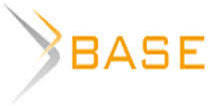TELEVISION BROADCAST OF THE LITURGY AS A SEARCH FOR A NEW PARADIGM OF THE RITE IN THE BOOK “THE CHURCH BEFORE MEDIA CHALLENGES (LITURGICAL SYMBOLISM, PERFORMANCE AND MEDIA INTERPRETATION OF ROMAN CATHOLIC WORSHIP)” BY MARIJANA AYZENKOL
This work is an analysis of the scientific field of interests of the Serbian scholar Marijana Ayzenkol, which is reflected in her book “The Church before Media Challenges (liturgical symbolism, performance and media interpretation of Roman Catholic worship)”. In the first part of her book, the author, based on an analysis of relevant official documents, examines the historical stages that the Church went through in the process of shaping its attitude towards social communication. From the moment of the emergence of modern technological means, they are viewed as a faster and easier way of preaching, and analogies are to the archaic mission of the missionaries, but the real challenge is, in fact, much greater because you need to find a way to introduce the Gospel into a new culture, the culture of the media, the New Age, as they call it in church documents, which in itself already exists.The second part of the book provides an interpretation / explanation of the signs and symbols of the Roman Catholic liturgy (water, oil, walking ...) and its semiological analysis. The main question that the author asks is whether the spectator of the liturgy through the mass media can become a participant in the full sense of it.

















While nobody left any comments to this publication.
You can be first.
Azenkol, M. (2011), Tserkov’ pered vyzovami media (liturgicheskaya simvolika, performativnost’ i media-interpretatsiya rimo-katolicheskogo bogosluzheniya) [Church in front of media challenges (liturgical symbolism, performativity and media interpretation of Roman Catholic worship)] Most Art, Zemun, Serbia (in Serb.).
Butler, J. (2005) “Lacan, Riviere and the strategies of masquerade”, Gendernaya teoriya i iskusstvo. Antologiya: 1970—2000 [Gender theory and Art. Anthology: 1970-2000], ROSSPEN, Moscow, Russia (in Russ.).
Elfimov, A.L. (1992), “Clifford Geertz: The Interpretation of Cultures” Etnograficheskoe obozrenie, 3, 144-150.
Goffman, E. (2004), Analiz freimov: esse ob organizatsii povsednevnogo opyta [Frame analysis: an assay on the Organization of Experience], Translated by Bumagin, R.E., Institute of Sociology of the Russian Academy of Sciences, Moscow, Russia (in Russ.).
Interculturele puzzels: Richard Schechner en het theater in de 21e eeuw (2002), in Kees Epskamp a.o. (ed.), PassePartout, Utrecht, Netherlands.
Kellner, D. (1995), Media Culture: Cultural Studies, Identity and Politics Between the Modern and the Postmodern, Routledge, London, UK.
Pavis, P. (1982), Languages of the Stage: Essays in the Semiology of Theatre, Performing Arts Journal Publications, New York.
Rothstein, E (2003), “Reason and faith. Eternal relationship”, New York Times (December 20).
Steigervald, R. (1971), “Tretiy put” Gerberta Markuze ["The Third way" by Herbert Marcuse], translated by Popov, A.D., Rodin, V.M., Mezhdunarodnye otnosheniya, Moscow, Russia (in Russ.).
The Cambridge Guide to American Theatre (1993), in Wilmeth, D.B. and Miller, T.L. (ed.), Cambridge University Press, Cambridge, UK.
Trykov, V. P. (2012), “Formation of a theoretical model of modern higher education: Jean-Francois Liotard's postmodern concept of higher education”, Knowledge. Understanding. Skill, 3 [Online] URL: http://www.zpu-journal.ru/e-zpu/2012/3/Trykov_Lyotard-Conception-Higher-Education/ (Accessed 10 August 2019) (in Russ.).
Turner, V. (1983), Simvol i ritual [Symbol and ritual], Nauka, Moscow, Russia (in Russ.).
Zarrilli, P. B. (2009), Psychophysical Acting: an intercultural approach after Stanislavski, Routledge, London, UK.